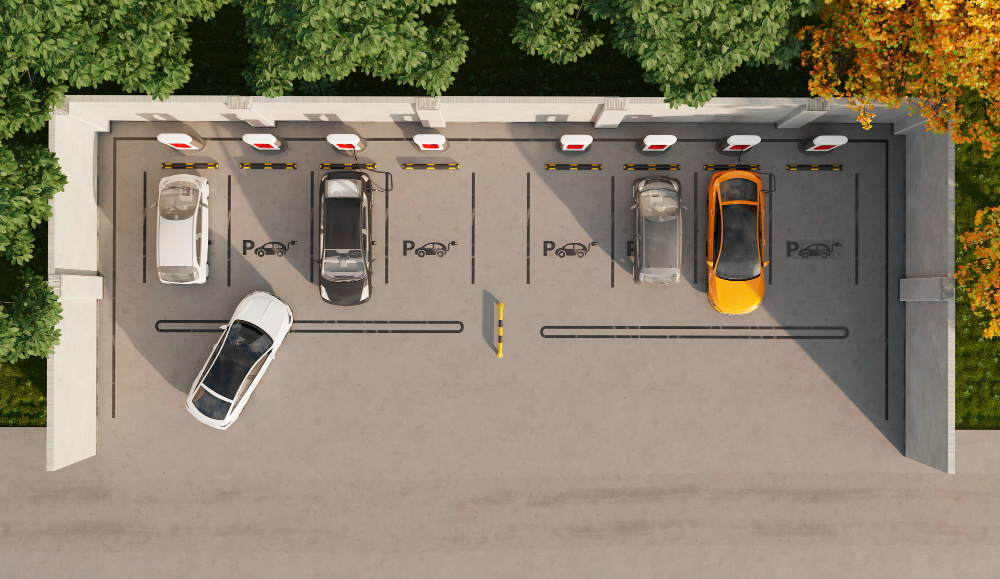As urban density increases and the demand for space continues to rise, the future of parking in New South Wales (NSW) is poised to undergo significant transformations. This blog explores the innovative parking solutions and technologies that are set to reshape parking across the state.

Evolution of Parking Solutions
Discover the future of car parks in NSW.
Multilevel Car Parking Systems
One of the most prominent trends in modern urban planning is the shift towards multilevel car parking systems. These structures are designed to maximise space by building upwards, rather than outwards, offering multiple floors of parking within a condensed footprint. This approach not only reduces land use but also provides more parking spaces in areas where ground-level real estate is scarce and expensive.
Automated Parking Technologies
The future of parking in NSW also points towards automation. Automated parking systems use robotic systems to park and retrieve cars without human intervention, significantly increasing the efficiency and capacity of car parks. These systems reduce the need for driving lanes and ramps, allowing for more compact parking designs and reducing the time drivers spend searching for a spot.
Enhancing Accessibility and Connectivity
As urban areas grow denser, the way we manage and interact with parking spaces is evolving to enhance user experience and accessibility through innovative smart parking technologies.
Real-Time Parking Data
Smart parking solutions leverage the power of technology to collect and disseminate real-time data on parking availability. By integrating with mobile apps, these systems provide drivers with up-to-the-minute information on open parking spots, which helps in planning routes more efficiently and reduces the time spent driving around looking for a space.
Dynamic Pricing Models
Another significant feature of modern smart parking systems is dynamic pricing. Prices can vary based on demand, time of day, or even specific events, which helps manage parking resources more effectively and can incentivise drivers to park during off-peak hours or in less congested areas.
Navigation and Guidance
Further enhancing the parking experience, some smart parking applications offer navigation services that guide drivers directly to available parking spots. This not only saves time but also significantly cuts down on fuel consumption and emissions from cars that would otherwise be idling or moving slowly in search of parking.
Environmental Benefits
By reducing the time vehicles spend looking for parking, smart parking technologies also contribute to lowering the overall carbon footprint. Fewer cars circling the block means reduced congestion and emissions, aligning with broader environmental goals of reducing urban air pollution.
Sustainability in Parking: Green Innovations and Technologies
As we push towards more sustainable urban development, the design of parking structures is evolving to incorporate green technologies that mitigate environmental impacts while catering to modern needs.
Integration of Solar Panels
Many new parking facilities are installing solar panels on rooftops and over parking lots. These installations not only provide shade for parked cars but also generate renewable energy that can power parking lot operations, including lighting and automated payment stations, or even feed electricity back into the grid.
Green Roofs on Parking Facilities
Green roofs are becoming a popular feature in parking structures, turning otherwise unused spaces into lush areas that can help insulate the building, reduce urban heat islands, and manage stormwater runoff. These green roofs can also provide pleasant visual aesthetics and potentially public recreational spaces in urban environments.
Electric Vehicle (EV) Charging Stations
With the rise in electric vehicle ownership, the integration of EV charging stations in parking facilities is crucial. Modern car parks are increasingly equipped with these stations, encouraging the adoption of electric vehicles by making charging convenient and accessible. This shift not only supports environmental goals by reducing reliance on fossil fuels but also caters to the growing market of EV drivers.
The Impact on Urban Mobility
The future of parking in NSW is intrinsically tied to broader shifts in urban mobility, notably through innovations like car-sharing services and autonomous vehicles.
Rise of Car-Sharing Services
Car-sharing services have grown in popularity, reducing the need for personal vehicle ownership and, consequently, the demand for parking spaces. As this trend grows, parking facilities are being redesigned to serve as pick-up and drop-off points rather than traditional all-day parking.
Integration of Autonomous Vehicles
The anticipated integration of autonomous vehicles (AVs) presents a significant shift. These vehicles may require different types of parking spaces, equipped with advanced charging stations and digital communication systems. Parking structures might evolve to become more than just storage spaces, potentially serving as hubs for AV maintenance and management.
As these technologies advance, they will necessitate changes in parking infrastructure to support new vehicle functionalities and user behaviours, shaping the future landscape of urban mobility.
The Future of Car Parks in NSW
The future of parking in NSW is an exciting frontier in urban development and mobility management. By embracing innovative technologies and sustainable practices, NSW can address the challenges of modern parking needs while enhancing the efficiency and environmental friendliness of its urban landscapes.
Reminder for NSW Drivers From Greenslips4Earth
Remember, whether you’re parking in a state-of-the-art facility or on the street, all NSW drivers need a valid Greenslip or CTP insurance to drive on NSW roads. Greenslips 4 Earth’s CTP Calculator allows you to easily compare Greenslips prices from leading insurers, ensuring you comply with legal requirements while securing the best possible deal.
For more information on the future of parking and to compare Greenslip prices, check out our blog.





